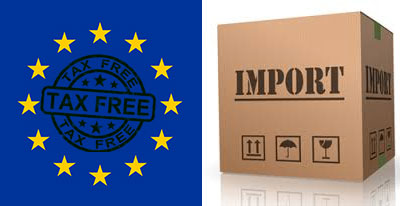If your company is importing goods into the European Union (‘EU’), then it will face some complex and varying rules on VAT compliance and charging. This will depend on: the type of goods; the countries involved and their local rules; the countries involved; and are all the parties in the chain VAT registered or not.

Below are some of the issues companies need to consider. First of all, is it an import or intra-community supply of goods.
Imports charged with VAT
For the purposes of EU VAT and customs, bringing goods into the EU for the first time, from another non-EU country, is termed an import. Generally, the country of arrival will look to charge its standard VAT rate (e.g. Germany at 19%) on the import transaction. This must be settled prior to the release of the goods from customs. The goods are then in ‘free circulation’ and may be stored and sold or sent to another EU country.
Intra-community supplies are VAT zero-rated
If you are selling or moving goods from one EU country to another, then you will not have to charge any VAT. This simplification of the EU VAT system was introduced in the 1993 Free Market Reforms. However, there are a number of important criteria to be met:
Both parties in the transaction must have a valid VAT number.
You must check your foreign customer’s VAT number with the EU VIES system.
You must note your customer’s VAT number on your sales invoice.
You must have documentary proof (e.g. goods transport documentation) of the movement of the goods across the border.
The goods then leave the country within a set time – typically three months.
If these conditions are not met, and then irregularities arise, the tax authorities may find you liable for any missing VAT. If your customer does not have a valid VAT number, or you are selling to individual consumers, then you must charge the VAT rate of the country of dispatch.
Probably. The tax authorities will want to record any movement of goods, and potential tax liability, against a unique VAT number held by a company. This includes both imports and intra-community supplies.
So if you are importing goods into the EU, the customs will require either you or your customer to provide a valid EU VAT number. Typically, since you will not want to disclose the customs cost value of the goods to your customer for commercial reasons, it is better for you to provide the VAT number. In addition, many customers now insist on goods being fully cleared for VAT purposes.
This then obliges you to provide a valid VAT number, or register for one if you do not have one. Companies should be careful about incurring import VAT without having a valid EU VAT number. A number of countries (e.g. Italy and Poland) can make the process of recovering any VAT paid to customs very complicated and slow.
If you are an EU company from a different state to the country of import or intra-community arrival, then you can use your domestic VAT number.
However, there may be circumstances when this is not valid. For example, if a French company imports into Germany, but then sells locally, it may need a Germany VAT registration. If it had moved the goods to Spain, it may not have needed a Spanish VAT number.
If you are an non-EU company, then you will almost certainly have to register your non-EU company as a non-resident VAT trader in at least one EU country. Some countries do operate special schemes to help imports avoid this requirement (e.g. Netherlands), and/or provide VAT cash flow deferment programs (e.g. Czech Republic).
Many countries offer excellent VAT deferment schemes. The Netherlands import VAT scheme is very popular. The Belgian import VAT regime has recently been improved. The UK VAT deferment account is another example where the importer can delay the payment of UK VAT for over 30 days.